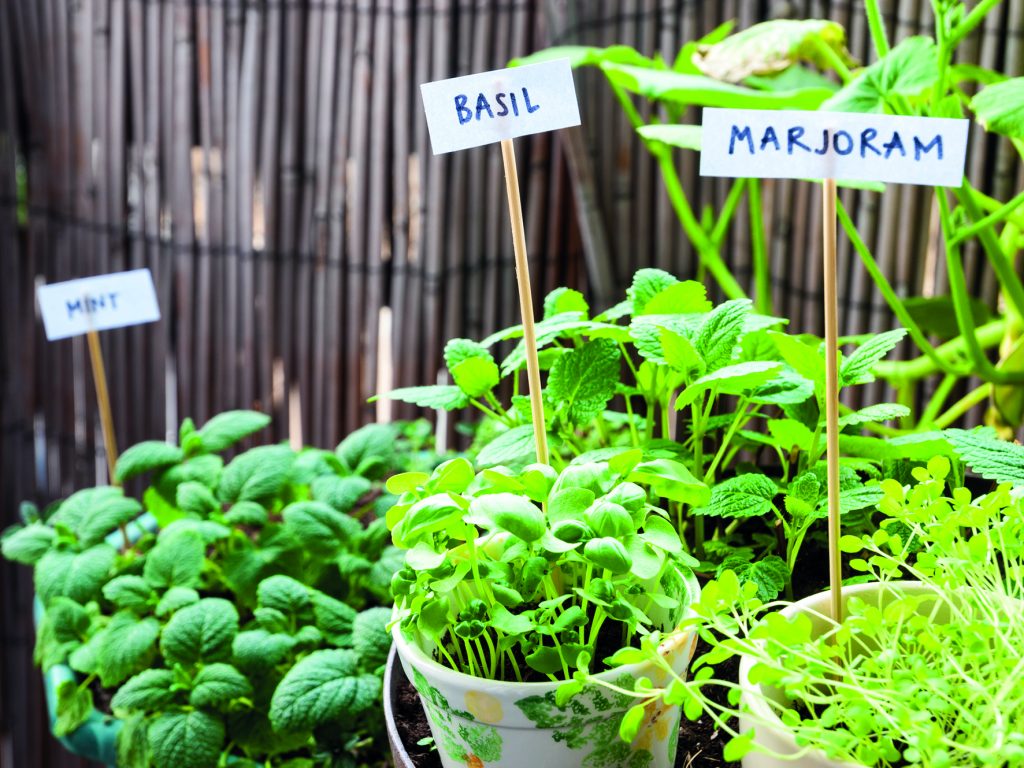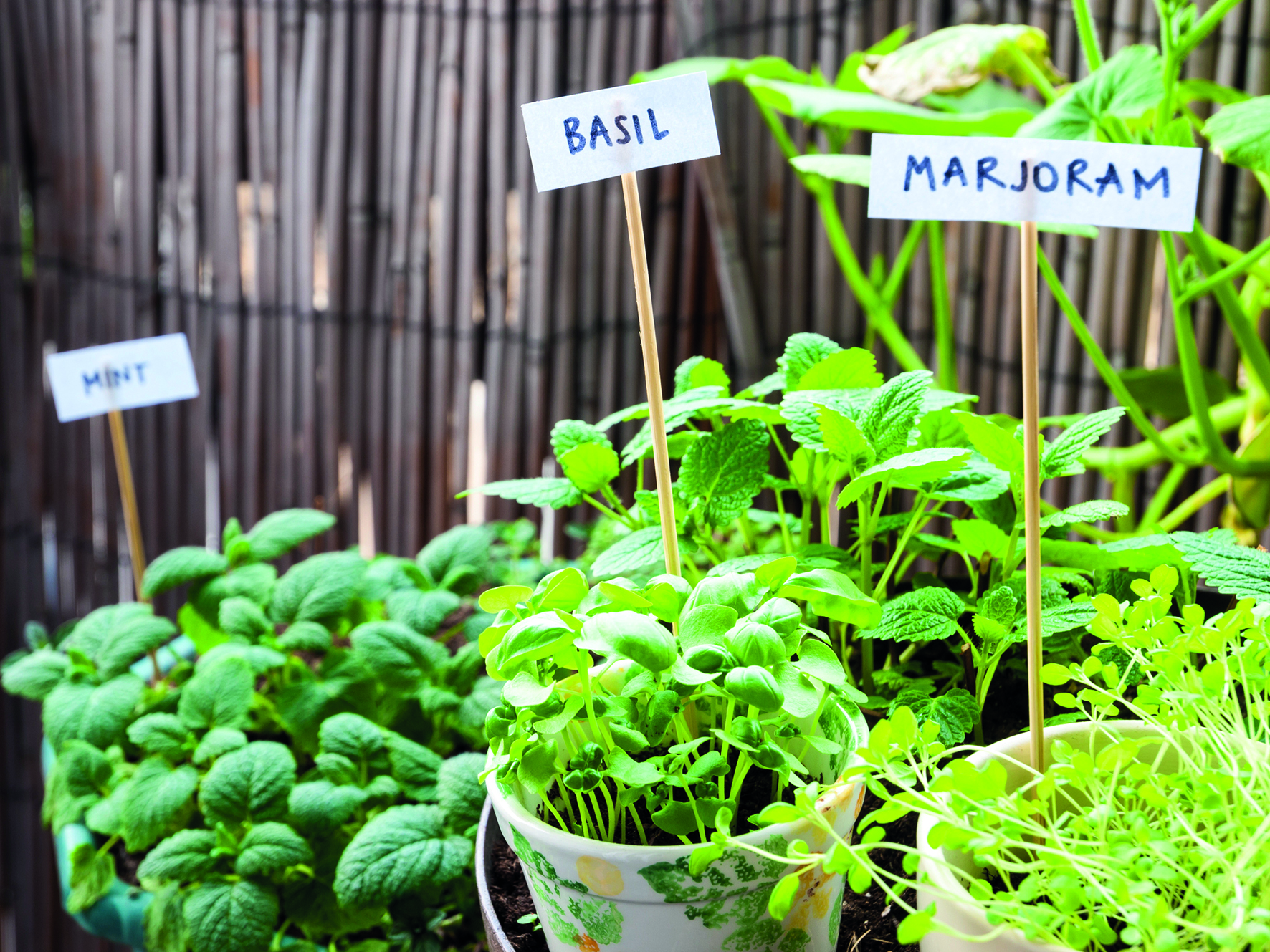
Basil, marjoram, balm-mint, and mint in flower pots in balcony. Organic, pesticide free gardening.
There’s nothing nicer – or healthier – than cooking with fresh herbs picked from your own garden. Most are easy to grow and look fab, whether in borders or containers and raised beds. Mediterranean varieties prefer sun and free-draining soil – add coarse grit and organic matter to clay soil. Others, such as coriander, mint and parsley prefer some shade and plenty of moisture. Here’s my pick of the best:
Mint
Mint can be invasive in a border, so it’s best grown in a pot. It Iikes rich moist soil and can tolerate shade. Keep picking it to encourage growth and divide it when it’s outgrown the container. Varieties include Lemon Mint, Apple Mint and Chocolate Mint – nice in puddings!
Uses: Great in teas and summer drinks, with roast lamb or in Middle Eastern dishes such as couscous – I love mint sprinkled over feta and salmon before roasting.
Sage
Sage has lovely silvery leaves, but needs a good prune in early spring to stop it getting leggy. There are varieties with different leaf colours, such as purple and golden sage.
Uses: Great with onions in stuffing, with pork or sage butter.
Thyme
Its foliage comes in colours from golden yellow to variegated silver – and is best picked before the pretty pink or purple summer flowers.
Use: Use a few fresh leaves in stews and with meat such as beef burgers – also nice in minestrone soup.
Bay
A handsome evergreen shrub that can be trained into a ball, pyramid or lollipop.
Use: Bay leaves – fresh or dried – give a lovely flavour to stocks and soups. (Remove them before blending!)
Rosemary
A must-have herb – rosemary is tough, easy to grow and has pretty blue, lilac or white flowers. It can get big but is easy to prune into a neat shape. ‘Miss Jessopp’s Upright’ has a tall habit whereas creeping prostrate varieties are good hanging over walls.
Use: Great with roast lamb and roast veg.
Oregano (marjoram)
Best harvested before the pretty purple-pink flowers appear – but they’re lovely too and are a bee magnet!
Use: Strip off a few of the leaves for tomato-based pasta sauce or Bolognese. Or use the woody stems to make a bouquet garni.
Chives
Chives like well-drained soil, but can grow in heavier soils in partial shade. The flowers are so pretty, and you can eat them in salads, then cut the plant back to the ground for a second flush. Otherwise keep snipping off buds to encourage growth.
Use: With a similar flavor to garlic and onions, they’ll liven up salads, eggs and cheese dishes.
Fennel
The tall feathery foliage of fennel looks lovely with other tall perennials in a border and the yellow flowers are followed by edible seeds.
Use: Fresh leaves are tasty in salads and collect the dried seeds to make teas.
Basil
Unlike the others, basil is an annual. Grow in pots on a warm windowsill and avoid overwatering. You can grow it from seed or small plants – I bought a pot from the supermarket last year and divided it into five different pots. Sweet basil and Greek basil are two good varieties to look out for.
Use: Delicious sprinkled on pizzas or tomato-based Mediterranean dishes or blend with pine nuts and parmesan to make your own pesto.
Barbara Samitier is a garden designer who lives in Peckham Rye.
www.barbarasamitiergardens.co.uk
This article first appeared in the April 2017 issue of SE22 magazine.

